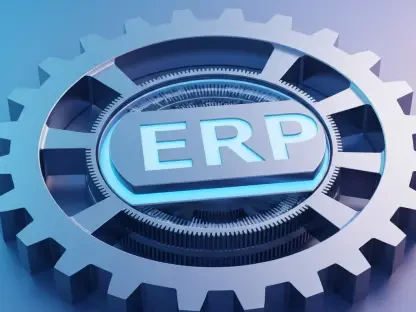In today’s data-centric world, organizations are increasingly relying on advanced Extract, Transform, and Load (ETL) solutions to manage diverse data sources efficiently. Traditional ETL methods often fall short in adaptability and scalability, leading to inefficiencies. Azure Data Factory (ADF) emerges as a transformative force for integrating disparate data sources, with metadata-driven approaches providing a sustainable solution to overcome the limitations of conventional methods. This guide aims to equip data professionals with the knowledge to harness the power of metadata-driven ETL using Azure Data Factory, focusing on scalability, security, and ease of integration.
Unlocking Scalable Data Integration with Azure Metadata
The need for advanced ETL solutions is more pressing than ever. As organizations deal with increasing data sources, leveraging a unified ETL process becomes essential. Azure Data Factory acts as a game-changer in this realm, effectively integrating diverse data types and sources without compromising efficiency. A metadata-driven approach stands as a reliable solution, offering a long-term strategy for managing and adapting to new data integration demands. Such solutions enhance the ability to modify ETL processes dynamically, thus providing an agile solution in a rapidly evolving digital environment.
The Shift to Agile ETL: Overcoming Traditional Challenges
Traditional ETL processes are often rigid, struggling to keep pace with dynamically changing data landscapes. These systems typically require substantial manual intervention to accommodate new data sources or transformations, leading to inefficiencies and increased operational costs. Metadata-driven frameworks flip this narrative by offering adaptable and scalable alternatives that inherently adjust to new requirements by modifying metadata instead of pipeline logic. Azure Data Factory facilitates these transformations, providing streamlined and secure ETL operations that are responsive to shifts in data structures or sources.
Step-by-Step: Building a Metadata-Driven ETL Architecture
Step 1: Establishing a Metadata Repository
Creating a centralized metadata repository is crucial for managing ETL configurations efficiently. Centralized metadata facilitates seamless changes to data processing routines without diving deep into pipeline alteration. Azure SQL Database is an optimal choice for storing this metadata, offering robust management and querying capabilities. With a centralized repository, organizations can ensure consistent data integration processes across different systems while maintaining optimal control over data transformations.
Step 2: Designing a Dynamic Metadata Schema
Constructing a dynamic metadata schema is vital for orchestrating ETL processes effectively. This involves defining connection details and ETL configurations that guide the data flow within the pipelines. The schema acts as a template for the ETL framework, ensuring that processes are coordinated and efficient. By storing information such as source and destination details, data transfer protocols, and specific operation guidelines, organizations can streamline ETL executions and align them to business objectives.
Step 3: Implementing Modular Pipelines in ADF
A fundamental aspect of metadata-driven ETL is implementing modular pipelines. In this structure, a parent pipeline orchestrates overall operations, retrieving JSON configurations specific to a workflow. The parent pipeline is complemented by template-based child pipelines that adapt dynamically based on metadata inputs, increasing scalability and flexibility. This modularity allows the system to handle various data scenarios by simply adjusting inputs, minimizing complexities, and enhancing system robustness.
Step 4: Integrating Security and Advanced Features
Security is paramount in any ETL system. By leveraging Azure Key Vault, sensitive data like connection credentials is securely managed, accessed only as needed. Scheduling and on-demand operation capabilities are integrated via Azure Logic Apps and API Management, accommodating diverse processing requirements. Combining these with event-based triggers grants users the agility to respond to real-time data changes promptly and securely, illustrating a proactive approach to ETL management.
Key Insights for Effective Metadata-Driven ETL Design
The benefits of metadata-oriented ETL design are numerous. Centralized metadata repositories simplify modifications to ETL processes, improving agility. A modular pipeline structure enhances adaptability and scalability. Integrating robust security measures fortifies trust, ensuring that data processes are reliable and compliant with standards. These insights provide a foundation for organizations seeking an efficient ETL strategy that aligns with modern digital demands.
Applying Metadata-Driven ETL to Transform Data Integration
The application of metadata-driven ETL extends across various industries, offering transformative impacts. Whether for large-scale data warehousing or real-time analytic environments, organizations benefit from increased flexibility and reduced overhead. As the data landscape continues to evolve, so do the trends in metadata-driven data integration. Future innovations may include advancements like AI-driven metadata management, offering even greater efficiencies and transformation capabilities.
Embracing the Future of Scalable ETL Solutions
The adoption of metadata-driven ETL frameworks has ushered in a new era of data management, promising agility and efficiency to those willing to embrace this evolution. As organizations continue to tackle complex data challenges, these frameworks offer solutions that scale with their needs, providing long-term value and robust data integration. Forward-thinking data architects are encouraged to consider metadata-driven approaches, exploring how they can transform organizational data practices and unlock newfound efficiencies.









